Table of Contents
- What Is a DXP?
- DXP Features — What to Look For
- Differences Between a DXP and a CMS
- DXP vs. CMS: When to Choose Which
Where a CMS serves as a hub for content, the DXP serves as an all-in-one spot for marketers managing a wide variety of functions. At their core, both tools are built to make marketers’ lives easier. However, as the expectations and needs of marketers and writers expanded over time, their tools needed to, too. That’s how the DXP came to be.
DXP Features: What to Look For
When looking at a content management system versus a digital experience platform, the key differentiator is that it goes far beyond just content management. If I were buying a DXP, I’d look for a broad functionality that goes far beyond the traditional CMS — if it’s similar to a CMS, I’d just stick with what I’m comfortable with.
Here’s what you can expect in a full-feature DXP:
- Content management. I’ve found that when companies switch to a DXP, they’re looking to replace their CMS. That means your DXP needs to handle all the content management your CMS was doing before. Look for tools that allow you to post, personalize, and edit content across all of your marketing channels.
- Customer journey mapping. The other main functionality of a DXP is to improve the customer journey from start to finish. Great DXPs include customer journey features like touchpoint analysis and omnichannel insights to help you fully understand where your prospects are coming from and how they’re interacting with your organization.
- Analytics. DXPs can have extremely rich analytics and reporting functions that may allow you to abandon additional third-party analytics tools. You’ll want to make sure your DXP has analytics capabilities matching what your team will take advantage of, and if you’re big on advanced analytics, make sure your DXP has the requirements you need.
- Ecommerce integration. I discovered that DXPs are particularly great options for ecommerce brands. Instead of piecing together multiple tools to optimize your ecommerce store, the DXP unifies your shop management in one spot. In addition to managing customers across channels, some DXPs include product management components. If you’re an ecommerce brand, you’ll definitely want to use a DXP with full ecommerce functionality.
- Omnichannel functionality. CMSs are focused on websites, versus DXPs which help you keep an eye on all your marketing channels. To me, this is a huge value-add. Instead of puzzle-piecing different integrations to create a confusing view of your channels, you can watch, analyze, and interact with all of your marketing channels in one spot.
- Personalization. Because of the rich data that DXPs gather, personalization can be extremely granular. When you’re shopping around for a DXP, look for one that boasts exceptional segmentation and personalization. These enable you to target messages, content, and ads to specific buyers or segments across a variety of channels.
I spoke with Julia Porter, the senior director at Optimizely, to gain some insights on how DXPs can make an impact: “If you really want to grab your customers’ attention with personalized content, create a seamless journey across multiple touchpoints, and unlock seriously useful audience insights,” she says, “a DXP has your back. It’s ideal for businesses looking to grow, connect their marketing stack, and craft a stellar customer experience.”
Differences Between a DXP and a CMS
You’ve no doubt realized that while DXPs and CMSs serve the same kind of role at organizations, they’re pretty different tools. Here’s a quick breakdown of some of the ways that DXPs compare to CMSs.
1. Functionality
A CMS has a focused functionality, emphasizing web content management. DXPs, on the other hand, have a much broader functionality, with an emphasis on marketer enablement. In a DXP, marketers can manage content across channels, do detailed reporting, segment and target audiences, manage ecommerce stores, and follow prospects and customers through their entire journey with a brand.
CMS: Simple, focused functionality
DXP: Robust, broad functionality
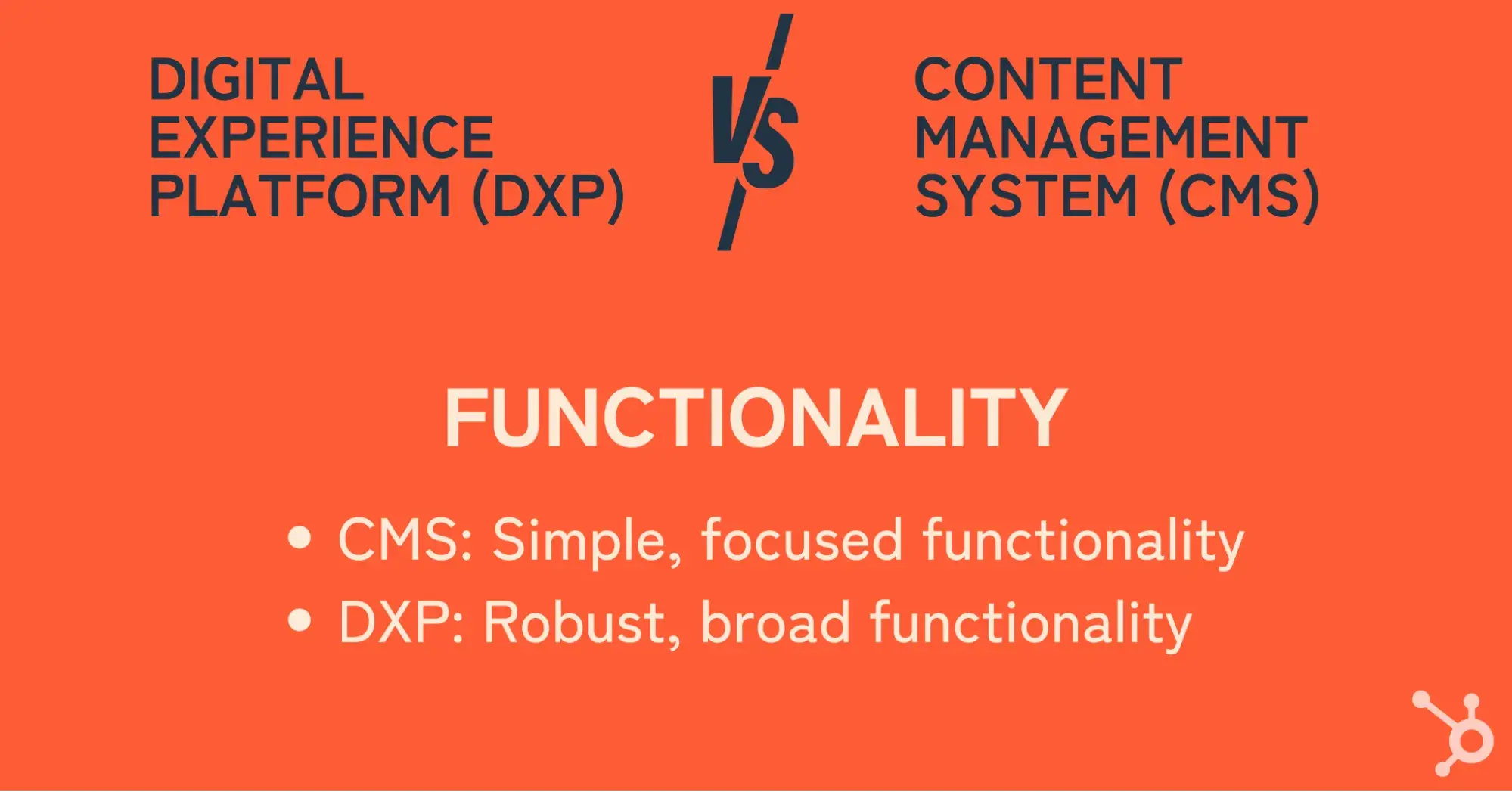
2. Personalization
While most CMSs have some personalization capabilities, they generally don’t capture the data necessary to create extremely detailed segments. DXPs, on the other hand, excel at personalization, enabling marketers to use all kinds of granular data to reach customers and prospects.
CMS: Basic personalization
DXP: Detailed segmentation and personalization
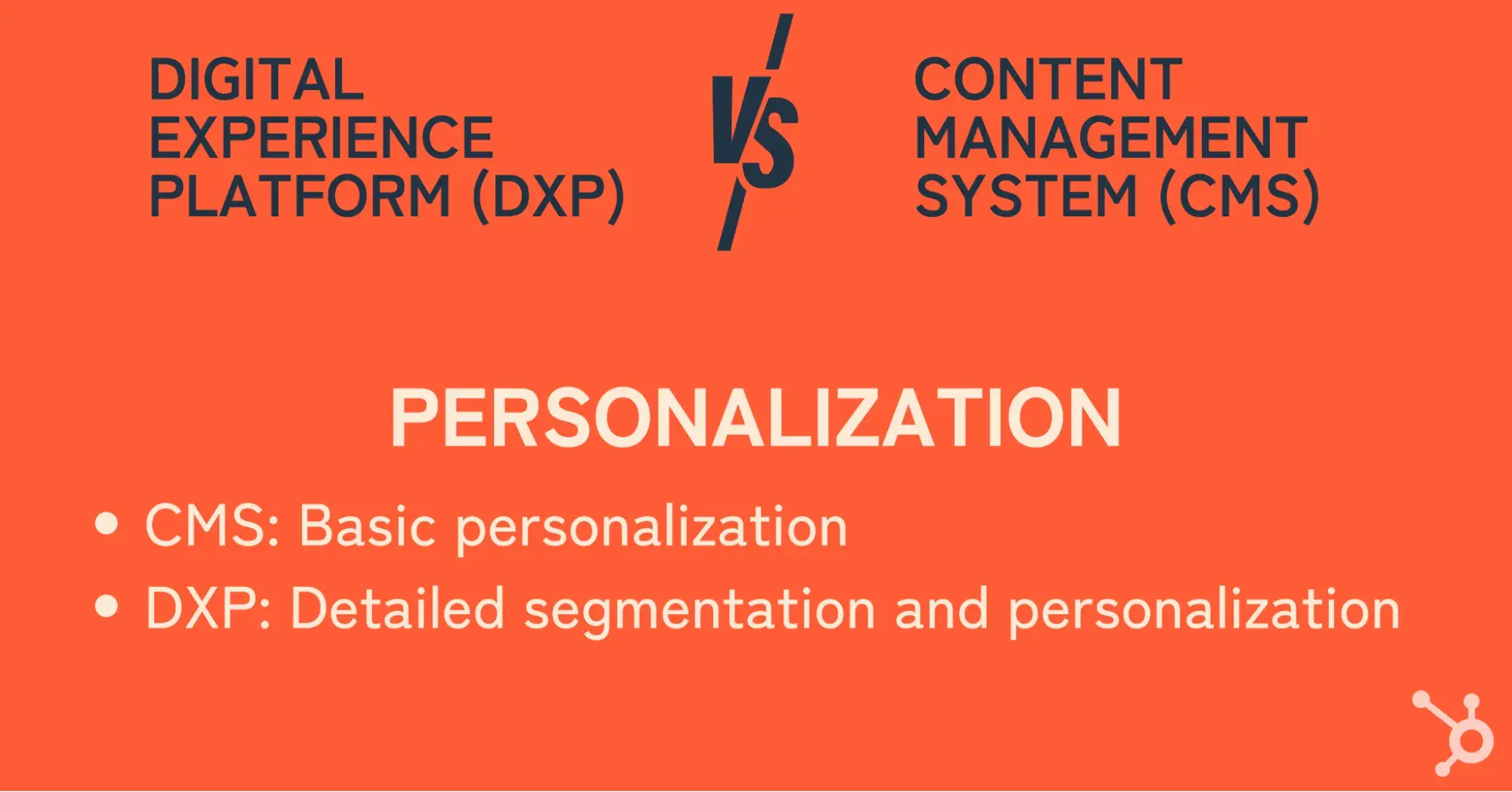
3. Adaptability
DXPs have become more common over the last few years. In fact, the industry has grown from a $2.5 billion industry in 2020 to one that is over $12 billion in 2023. The primary reason that DXPs have grown more popular is because they reflect the marketing landscape in which teams work.
In the early 2000s, marketers poured their energy into blogs. But now, with the increasing use of AI, social media, email marketing, and paid ads, they have a lot more to manage. DXPs are adaptable to these sorts of landscape changes.
CMS: Limited adaptability without significant tool improvements
DXP: Adaptable
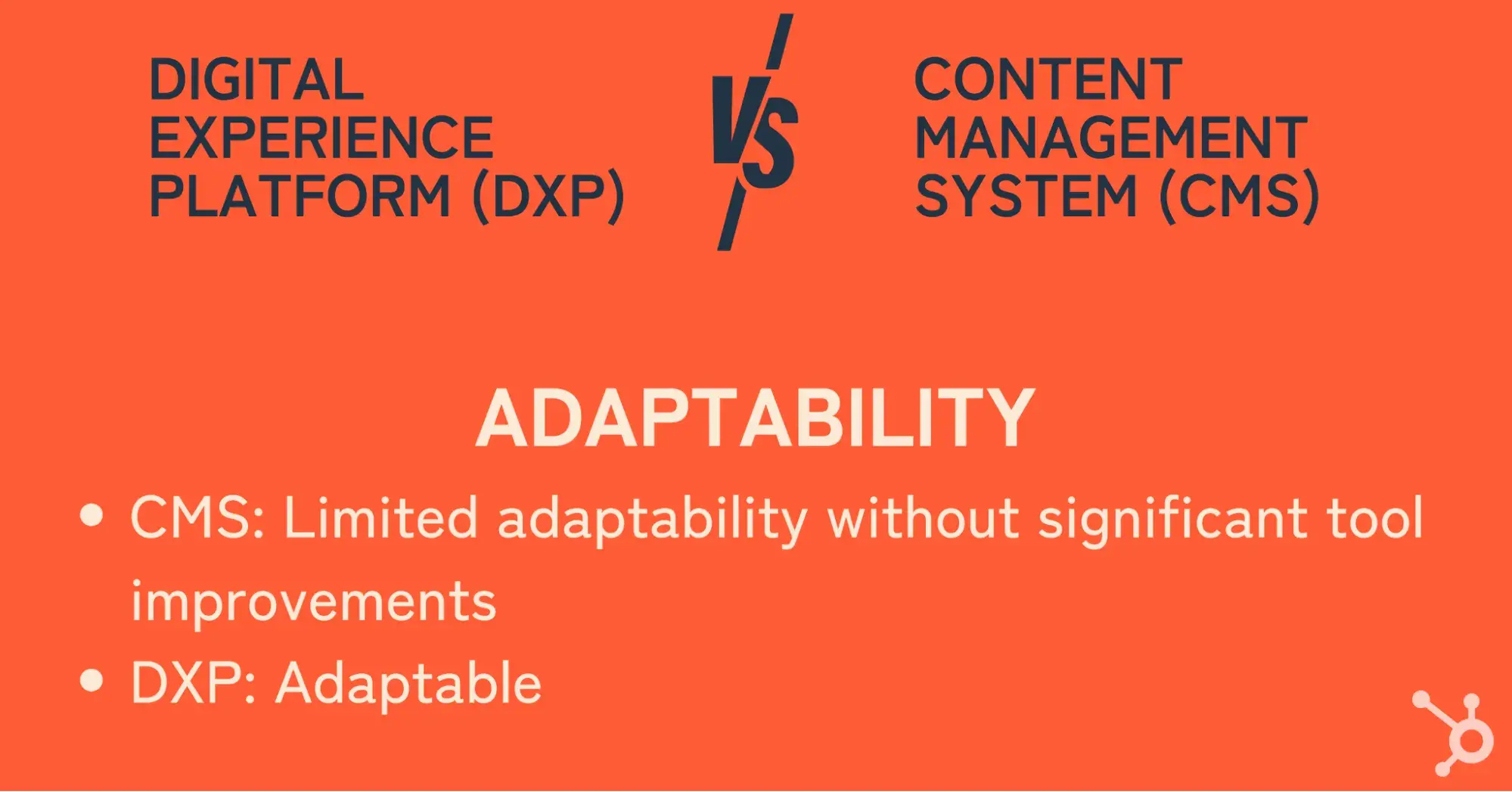
4. Integration
CMSs often face siloes in integration and may need to connect to another tool like a CRM to be able to function alongside other tools. But DXPs excel at integrating with others. DXPs can also share in real-time, while CMSs don’t generally have that capability.
CMS: Rigid and limited integrations
DXP: Built to integrate well with other tools
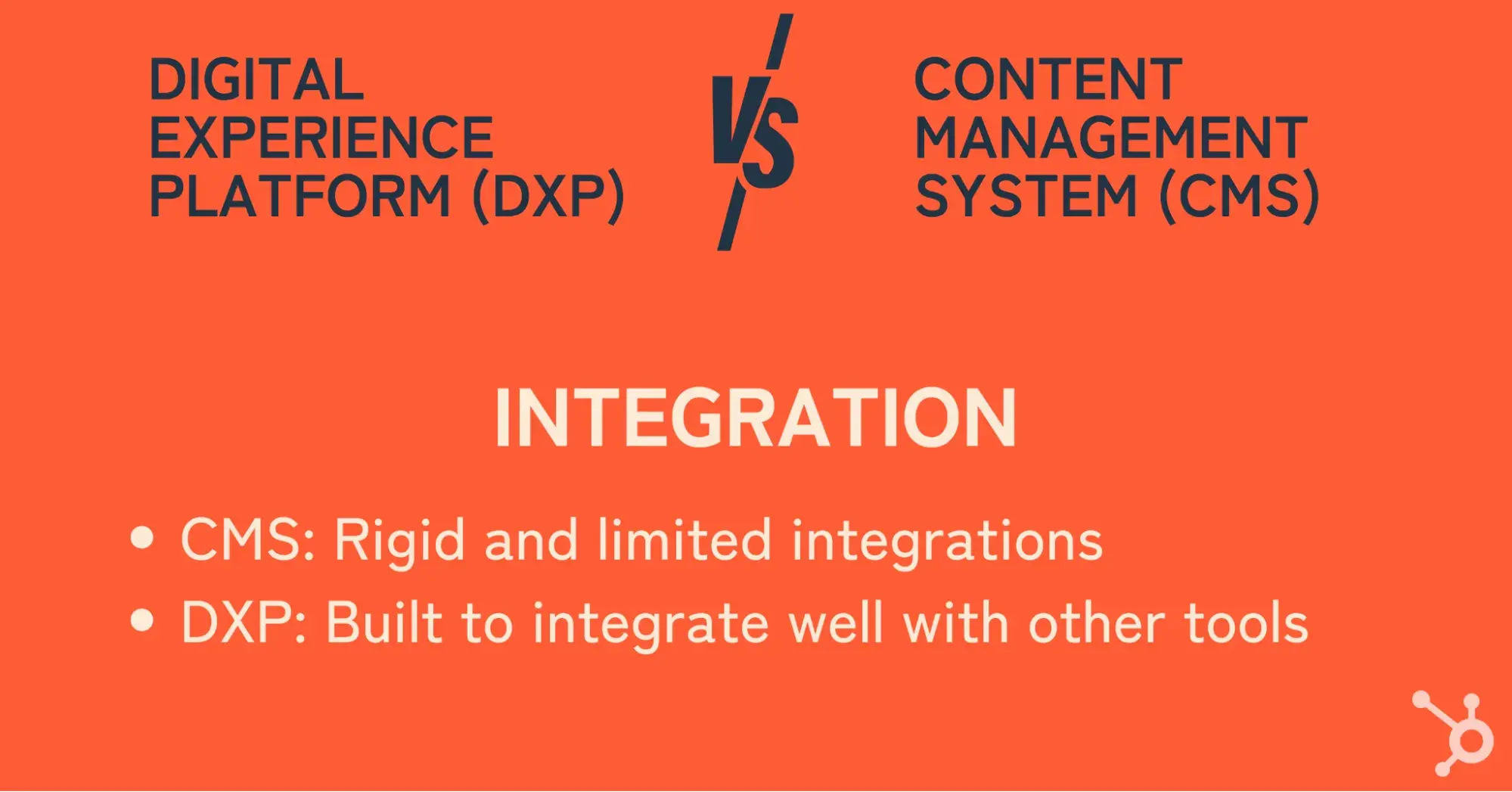
5. Cost
CMSs have a focused functionality and because the functionality is singular, the cost is generally a bit less than the price of a DXP. When considering the price of each, it’s worth considering both upfront costs and maintenance. You can expect that DXP maintenance is pricier due to its increased complexity.
CMS: Cheaper
DXP: More expensive
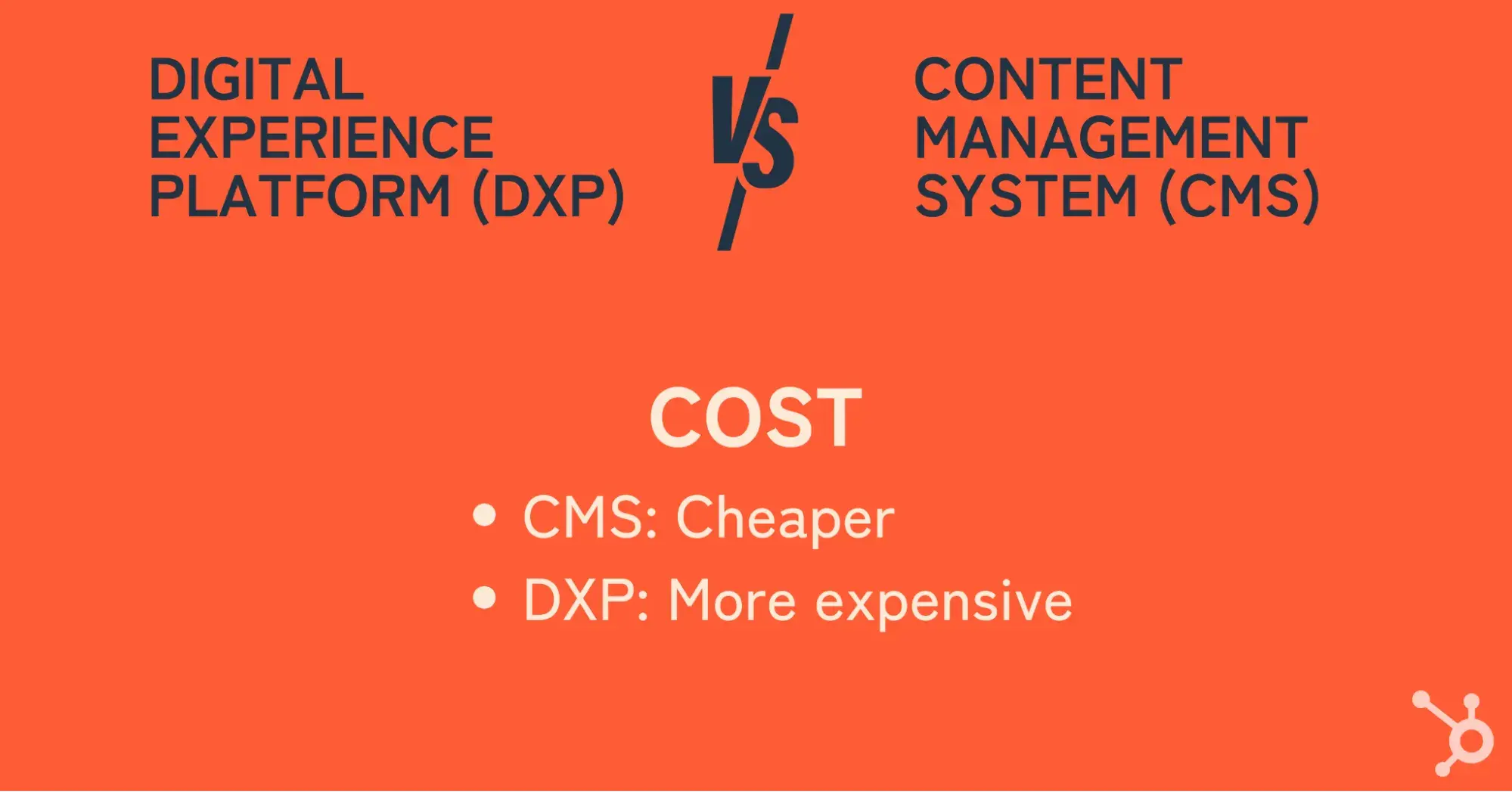
6. Complexity
DXPs are far more complex than CMSs. This has pros and cons, depending on your team's technical know-how. If your team is equipped to learn and master a new tool, the complexity is an advantage. However, the complexity may not be helpful if your team is less technically savvy. Implementation and maintenance are also more complex with a DXP (compared to everyday use).
CMS: Simple
DXP: Complex
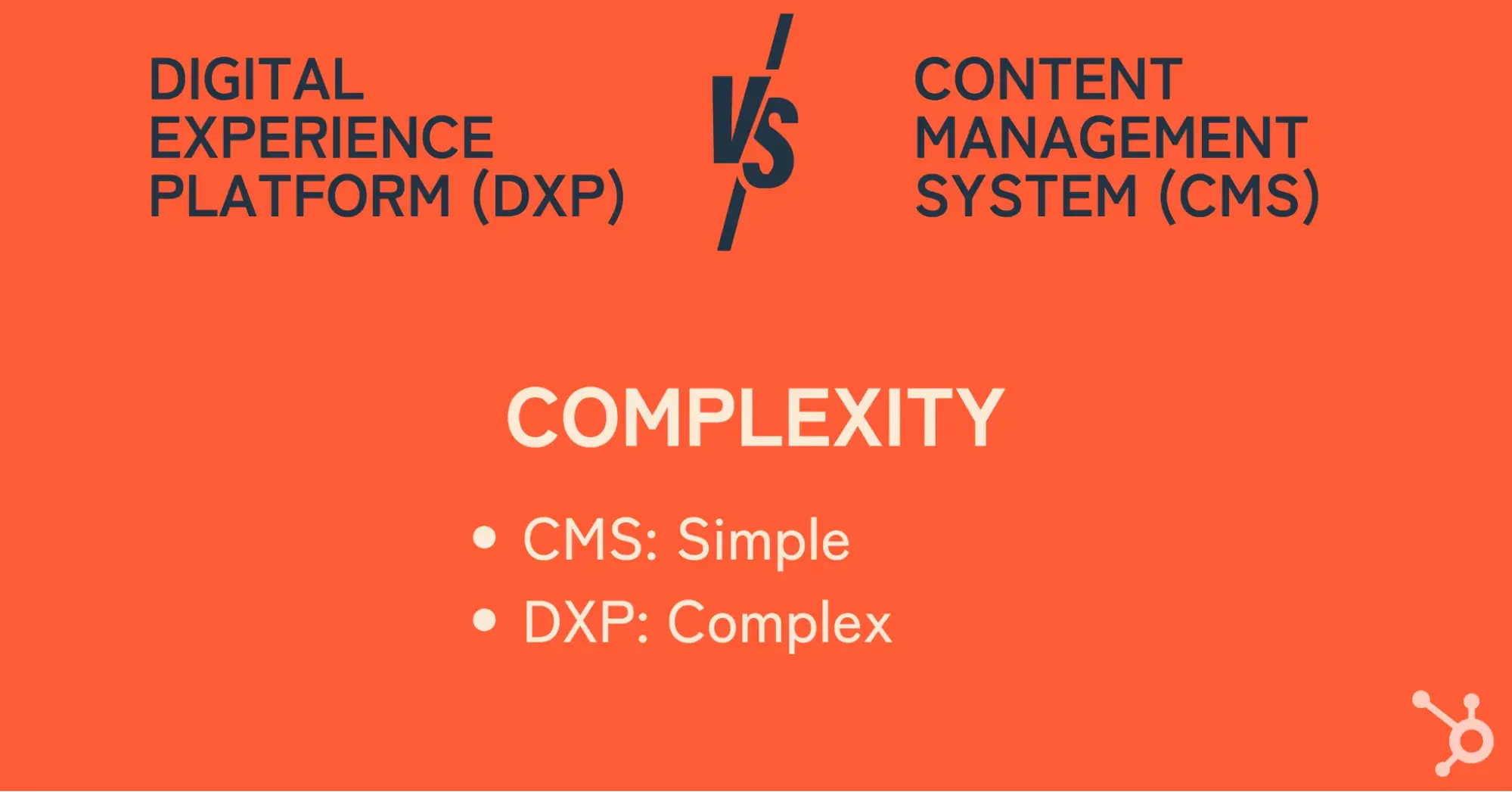
7. Analytics
One thing that stands out to me about the DXP is that it’s truly a valuable analytics resource. The insights are rich and can be sourced from a lot of different tools and channels, giving marketers the ability to garner deep insights from lots of things. CMSs are more limited in their analytics. Not only is the data less robust, but it also only covers one channel: the website. Finally, DXPs offer richer segmentation opportunities.
CMS: Basic and website-focused, with minimal segmentation
DXP: Robust and omnichannel, with rich segmentation
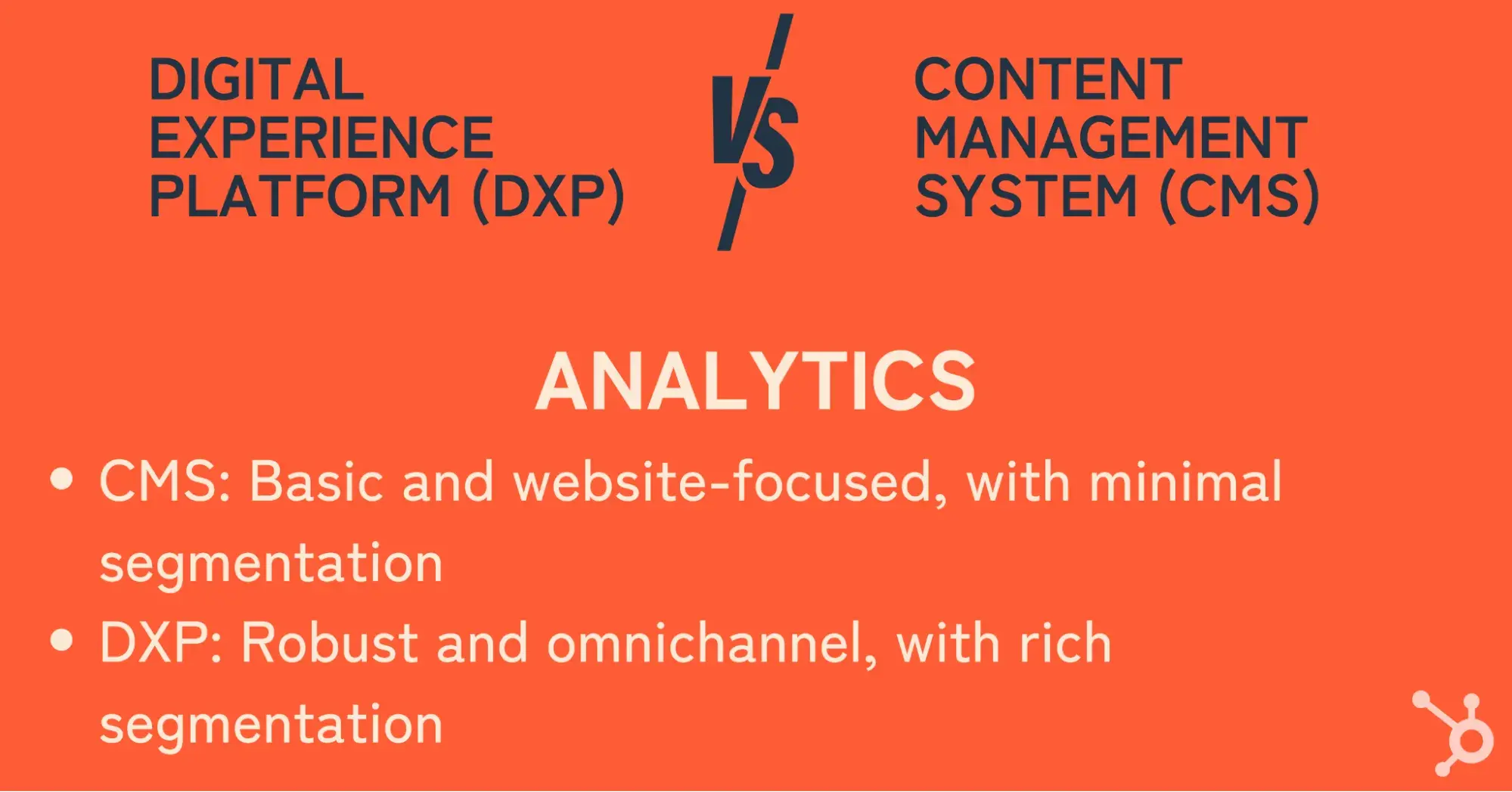
DXP vs. CMS: When to Choose Which
Still unsure about which tool you should choose? I’ll walk you through some important considerations to help you make the right choice for your business.
Price
I think the first way to determine which tool is going to be the right tool for you is price. DXPs can cost tens of thousands per year (even up to $200,000 annually), while CMSs are often priced between $15-200 per month.
For budget-conscious buyers → CMS
For folks with large budgets → DXP
Functional Needs
When you’re comparing a CMS versus a DXP, you have to consider the functions. If you’ve got a simple website, few segmentation needs, and limited action on other channels, I think a CMS could be a great option. If you’re managing many complex channels or segments, a DXP is a better way to go.
For simple, website-focused businesses → CMS
For complex, multi-channel organizations → DXP
Technical Expertise
The final major consideration is the technical expertise of your team. The primary users of your tool will be marketers who can vary significantly in their technical savvy. I recommend you take time to assess how comfortable your team is learning a new tool.
If your team is limited in their technical expertise → CMS
If your team is tech-savvy or adaptable → DXP
I asked Porter to shed some light on how to determine when it’s time to make the jump from a CMS to a DXP.
“While CMSs are great for managing basic website content, DXPs take things to the next level, empowering marketers to create hyper-personalized, omnichannel customer experiences,” she explained.
Final Thoughts
While I was writing this piece, I grew pretty inspired about how innovation begets innovation. As marketers’ jobs grew more diverse, organizations decided to revamp an old tool to bring it up to speed with new needs. And now that marketers and teams can work faster, who knows what innovation they’ll bring to life?
The DXP isn’t markedly different from the CMS in many ways, but in others, it’s a total departure from the traditional tool. As marketers grow to be more and more tech-savvy, I have no doubt that we’ll see an increase in DXP popularity.
If you’re considering whether or not to bring in a DXP, start by considering your needs, and then your resources, and finally, your teams’ ability to fully leverage the tool — after all, you can’t get the benefits of the tool without learning how to take advantage of it.
Content Management System








![20 Best Membership Website Builders and Platforms [+My Favorite Examples]](https://53.fs1.hubspotusercontent-na1.net/hubfs/53/14%20Best%20Membership%20Website%20Builders%20and%20Platforms%20in%202022%20%5B+%20Website%20Examples%5D.png)



